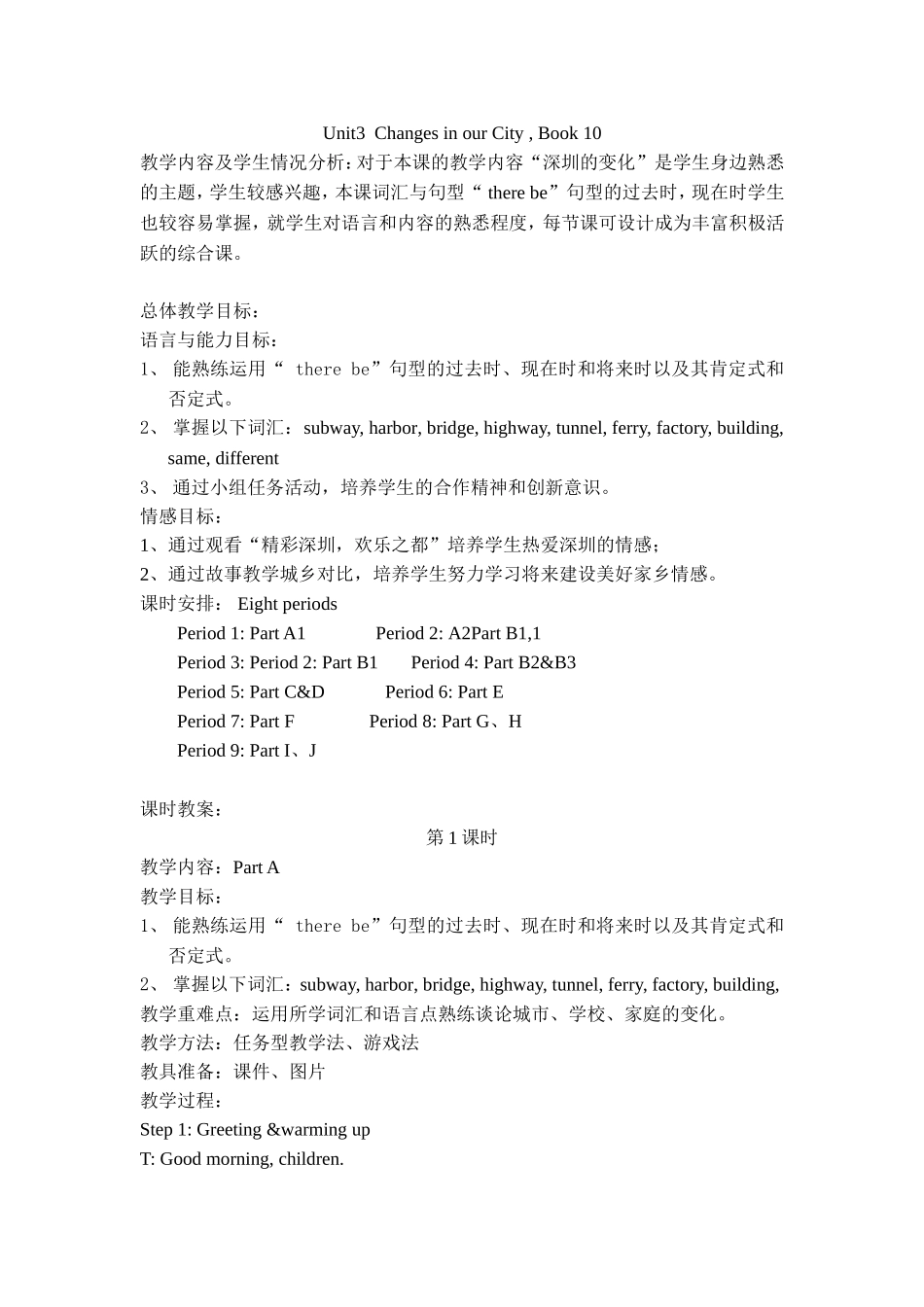Unit3 Changes in our City , Book 10教学内容及学生情况分析:对于本课的教学内容“深圳的变化”是学生身边熟悉的主题,学生较感兴趣,本课词汇与句型“ there be”句型的过去时,现在时学生也较容易掌握,就学生对语言和内容的熟悉程度,每节课可设计成为丰富积极活跃的综合课。总体教学目标:语言与能力目标:1、 能熟练运用“ there be”句型的过去时、现在时和将来时以及其肯定式和否定式。2、 掌握以下词汇:subway, harbor, bridge, highway, tunnel, ferry, factory, building, same, different3、 通过小组任务活动,培养学生的合作精神和创新意识。情感目标:1、通过观看“精彩深圳,欢乐之都”培养学生热爱深圳的情感;2、通过故事教学城乡对比,培养学生努力学习将来建设美好家乡情感。课时安排: Eight periodsPeriod 1: Part A1 Period 2: A2Part B1,1Period 3: Period 2: Part B1 Period 4: Part B2&B3 Period 5: Part C&D Period 6: Part E Period 7: Part F Period 8: Part G、H Period 9: Part I、J课时教案:第 1 课时教学内容:Part A教学目标:1、 能熟练运用“ there be”句型的过去时、现在时和将来时以及其肯定式和否定式。2、 掌握以下词汇:subway, harbor, bridge, highway, tunnel, ferry, factory, building, 教学重难点:运用所学词汇和语言点熟练谈论城市、学校、家庭的变化。教学方法:任务型教学法、游戏法教具准备:课件、图片教学过程:Step 1: Greeting &warming upT: Good morning, children.S: Good morning.T: What's the date today?S: It’s …T: What’s the wether like?S: It's fine.T: It’s a fine day. Now let’s go to Shenzhen City with two mice- Mickey and Mini. This is Mickey. This is Mini. Step 2: Presentation(1) 讲述自编的故事: T: Mickey and Mini are friends. Mickey got up early. Because he had to visit Mini in Shenzhen. They came to see Shenzhen museum.(2) 观看昔日深圳图片。T : They came to Shenzhen Museum. They saw many old photos of yesterday’s Shenzhen there.T: From 1980 to 1981, is Shenzhen City new and clean?S: No, it’s old.… T: Were there tall...


